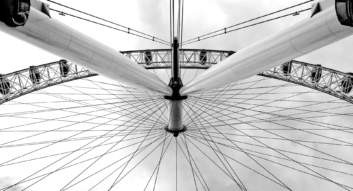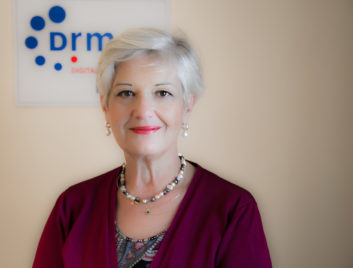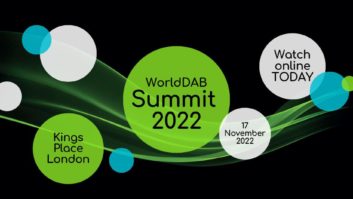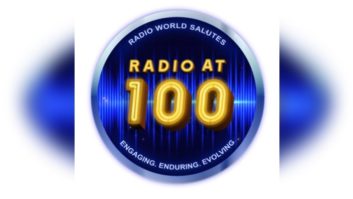The author is chairman of Digital Radio Mondiale.
In one of my drawers I recently found several plug adaptors, used over the years in various parts of the world. Some have three pins, some have two, a few are square others are round. The one I choose to travel with is always determined by my destination because most countries connect to electricity in their own way, according to their own standard.

I know the routine but still I can’t help wondering each time I pack my bag why there isn’t a single plug that is suitable for use in this global village. And then I ask myself why there isn’t simply one digital radio standard that can be easily deployed anywhere with one or several receiver models that will work no matter where you are, in the kitchen or car?
COMPLEMENTARY STANDARDS
For digital radio, the choice is infinitely simpler than for electricity plugs, as there are only three major digital audio broadcasting standards to choose from (DRM, DAB/DAB+ and HD radio). Each standard does different things, in different parts of the spectrum and the world. They can be used to offer different and sometimes similar benefits.
 DRM, the latest digital radio standard, can be deployed in all frequency bands (AM as well as FM). This means it can give more content with lower power consumption and better audio quality in FM but very clearly in AM (shortwave and medium wave) using the current analog frequencies in use. The standard also needs more receivers than its over 1.5 million cars in India, to be appreciated for its clear audio, text and emergency warning benefits.
DRM, the latest digital radio standard, can be deployed in all frequency bands (AM as well as FM). This means it can give more content with lower power consumption and better audio quality in FM but very clearly in AM (shortwave and medium wave) using the current analog frequencies in use. The standard also needs more receivers than its over 1.5 million cars in India, to be appreciated for its clear audio, text and emergency warning benefits.
DAB/DAB+, an open standard, like DRM, works in the liberated analog TV Band III, giving more space on multiplexes to stations that want to cover and compete in the same areas, like very congested cities for example in Europe.
HD Radio is a United States-based proprietorial in-band solution mainly designed for the FM band. It meets U.S. requirements and uses a generous spectrum allocation. Nowadays its owners are also promoting a digital-only medium wave solution.
Three standards, three sets of technical specifications that compete and, in some cases, complement each other.
MIX AND MATCH
DRM and DAB/DAB+, both born in Europe, can present a comprehensive and complete solution for a country. DRM can futureproof the medium wave and shortwave bands and infrastructure, while DAB/DAB+ can offer savings and opportunities in large or congested cities.
In addition, since the multiplexes are really at their best when full, for smaller places, DRM in the FM band could be easily deployed. That is unless of course the regulator has set its heart on solving the small area, small broadcaster challenge by using a miniature DAB+ solution.
On the other hand, there are some who think that DRM for AM could be complemented by HD Radio in FM, thus creating full coverage and a full in-band solution with simulcasting in the mix.
With their eyes fixed on the digital conversion of the same lucrative FM market, DAB+ and HD do not mix, really, unless they make alliances for various “hybrid” car solutions.
So, is only the competition or perceived competition, among these three standards stopping a “mix and match” approach? The answer is, as always, a bit more complicated.
In a few cases, some feel that because they chose DAB/DAB+, it’s possible to bend and stretch this local digital solution in a way that allows it to cover an entire country (like Norway) without filling the edges and higher frequencies with DRM.
In larger countries, such as that of India where DRM is now being rolled out, it makes sense to employ just one standard (the DRM standard) to FM, rather than start messing with and adding other standards.
IMPORTANT QUESTIONS
As mentioned, DRM and DAB+ share a lot of the technical DNA and, rightly so, some countries in other parts of the world, for example in the Southern hemisphere, are exploring the possibility of deploying DRM and DAB+. HD Radio on the other hand doesn’t fit easily with any of the open standards.
At the end of the day, the one-standard choice or the mix and match approach are dictated by size of the country, legacy and infrastructure of the broadcasting industry and general goals.
Do you really want to give up international broadcasting in pursuit of other platforms, with some of the known consequences? Or would you prefer to strengthen your international voice (like Indonesia)? Do you want to give a digital voice to local communities or stimulate competition among commercial stations?
There is also the all-important question regarding cost. Introducing one standard rather than two will always be cheaper for transmitter and, especially, receiver manufacturers, as well as for the listeners. A DRM-DAB+ receiver is a distinct possibility and probably much cheaper to manufacture now than a couple of years back. A DRM-HD receiver would be prohibitively expensive because of all the IP and other associated costs.
And while digital radio tests continue, commissions formed, secret and not so secret conversations conducted, the big boys in the chipset industry are forging ahead with a pragmatic and comprehensive digital solution, the all-standards chipset.
This is meant especially for the car industry, so any one standard, or combination of standards, can be supported in cars, in any country, no matter which standard or standards are chosen, but always at a cost.
A common digital platform showcasing all three standards ready to satisfy all needs is now a reality. It is the multi-standard chipset able to be produced in great volumes and used according to geographic and industry needs.
So, the multi-standard “adaptor” (or rather the chipset) can be deployed now but it will always cost more, in some combinations much more, than one single, humble plug.












